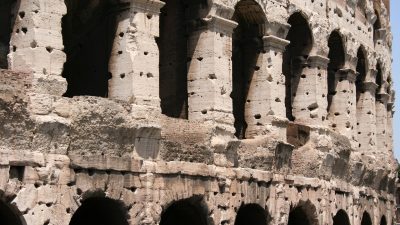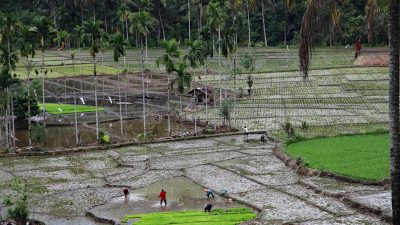The 1943 Tosya–Ladik Earthquake and Its Lasting Impact
The 1943 Tosya–Ladik earthquake stands as one of Turkey’s most devastating seismic events, yet it remains overshadowed by more recent disasters. Striking on 26 November 1943, the powerful quake wreaked havoc across northern Turkey, causing mass casualties and levelling entire towns. Despite its catastrophic impact, this tragedy is often overlooked in historical discourse. Why has it faded into obscurity? Was it purely a natural calamity, or did human negligence play a role in worsening its effects? The answers reveal a narrative not just of destruction, but of survival, forgotten warnings, and unresolved questions.
A Natural Disaster or a Preventable Crisis? Unravelling the Causes of the Tosya–Ladik Earthquake
The earthquake was triggered by activity along the North Anatolian Fault, one of the most seismically active fault lines in the world. The region has a long history of devastating tremors, yet despite these known risks, little was done to strengthen infrastructure or educate communities about earthquake preparedness.
Some experts argue that the widespread destruction could have been mitigated if Turkey had enforced stricter building regulations and prioritised earthquake-resistant construction. At the time, most structures were inadequately built, making them highly vulnerable to collapse. The lack of emergency preparedness and a sluggish response worsened the disaster, raising the critical question: could better foresight have saved more lives?
The 1943 Earthquake in Numbers: Deaths, Injuries, and Widespread Devastation
- Casualties and Injuries: The disaster claimed approximately 4,000 lives, with thousands more suffering severe injuries. Overwhelmed medical resources left many without the necessary care, increasing the toll.
- Infrastructure Destruction: Entire villages were flattened, with homes, schools, and government buildings reduced to rubble. The towns of Tosya and Ladik bore the worst of the destruction, with neighbouring areas also severely impacted.
- Economic Fallout: The region suffered immense economic losses as agricultural lands were destroyed, businesses collapsed, and essential services were crippled. Recovery took years, leaving many residents in prolonged hardship.
A Day of Horror: Eyewitness Testimonies from the Disaster
For survivors, the earthquake was nothing short of a nightmare. Eyewitnesses recall the terrifying tremors, buildings collapsing within seconds, and the deafening screams of those trapped under debris. Families were torn apart in an instant, with no time to react.
One survivor recounted watching his home disintegrate before his eyes, with loved ones buried beneath the wreckage. Another described the eerie silence that followed, as dust clouded the air and the realisation of loss set in. These personal accounts provide a harrowing insight into the human cost of the disaster.
Rescue operations were slow and uncoordinated. Survivors, left without aid, dug through the ruins with bare hands, searching desperately for missing relatives. The inadequate emergency response only deepened the trauma, leaving lasting scars on those who lived through the tragedy.
Turkey’s Response to the Crisis: Was It Enough?
The Turkish government faced severe criticism for its handling of the disaster. Emergency response efforts were insufficient, leaving thousands without food, shelter, or medical assistance. The lack of a coordinated relief strategy resulted in further casualties that could have been avoided.
With global attention fixated on World War II, international aid was minimal, forcing Turkey to manage the crisis largely on its own. While local volunteers displayed extraordinary bravery, the shortage of resources and expertise hindered effective relief efforts. This raises an unsettling question: had the response been better coordinated, how many more lives could have been spared?
A Ticking Time Bomb: Why the Tosya–Ladik Region Was Always at Risk
Seismologists have long warned of the North Anatolian Fault’s volatility. The 1943 earthquake was not an isolated event but part of an ongoing seismic cycle in Turkey. The region’s geological composition made it highly susceptible to powerful earthquakes, yet pre-emptive safety measures were largely absent.
Experts believe that early warning systems and reinforced building structures could have significantly reduced the disaster’s impact. However, at the time, such precautions were virtually non-existent. This lack of foresight turned what should have been a predictable natural event into an uncontained catastrophe.
Have We Really Learned? The Risk of a Future Earthquake in Turkey
- Advancements in Earthquake Safety: While Turkey has since strengthened building regulations and introduced preparedness strategies, many argue that these measures remain insufficient, especially in rural areas.
- Persistent Seismic Threats: Turkey continues to be one of the most earthquake-prone nations, with the North Anatolian Fault remaining a major risk. The potential for another disaster of similar scale is not a matter of ‘if’ but ‘when’.
- Government Readiness: Despite technological advancements, experts question whether Turkey is truly prepared for another devastating earthquake. The lessons from 1943 suggest that much more needs to be done to prevent history from repeating itself.
Final Thoughts: The Tosya–Ladik Earthquake and Its Unfinished Legacy
The 1943 Tosya–Ladik earthquake stands as a stark reminder of both nature’s fury and human vulnerability. Thousands perished, entire communities were obliterated, and the scars of the disaster still linger decades later. Although improvements have been made, a critical question remains: has Turkey genuinely absorbed the lessons of the past, or is another tragedy merely waiting to unfold?
Disasters like these should never be relegated to history books. Instead, they should serve as urgent warnings, pushing governments and communities to prioritise proactive safety measures. The 1943 earthquake was a lesson written in devastation—one that should still command attention today.
FAQs: Essential Insights on the 1943 Tosya–Ladik Earthquake
- What was the magnitude of the Tosya–Ladik earthquake?
It measured 7.2 in magnitude, ranking among Turkey’s deadliest earthquakes. - How many people were killed in the disaster?
Around 4,000 fatalities were recorded, though some sources suggest the actual number was higher. - Which areas suffered the most damage?
The towns of Tosya and Ladik were worst affected, with extensive destruction in surrounding villages. - Did this earthquake prompt major changes in Turkey’s disaster policies?
Some reforms followed, but critics argue they were slow and insufficient in addressing the risks. - Could Turkey experience another earthquake of this magnitude?
Yes, given its position on the North Anatolian Fault, Turkey remains highly vulnerable to future seismic disasters.
References:
1943 Tosya–Ladik earthquake – Wikipedia
1943 Tosya–Ladik earthquake – Wikiwand
1943 Samsun-Ladik | Türkiye Earthquake Memory Project – McGill University




